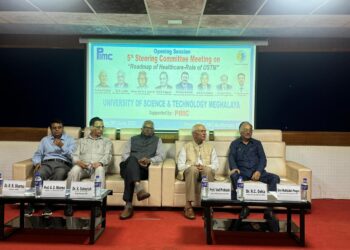Tripura’s Unakoti, also famously known as the ‘Angkor Wat of the North-East’ region, is aiming for a UNESCO World Heritage tag with both the government and Archaeological Survey of India (ASI), seeking to preserve the series of Shaivite rock carvings and sculptures in the northern part of the state.
Located in the Raghunandan hills of Tripura, Unakoti has been a Hindu pilgrimage site. Home to the largest giant bas relief sculptures in India, Unakoti is famously known for its massive stone and rock-cut sculptures that have been carved out from the hillside. Bas-relief or low relief structures are a type of sculpture where the image is projected at a shallow depth. This beautiful and stunning heritage site is surrounded by greenery and it is also a Shaivite pilgrimage site dating back to the 8th or 9th centuries CE or perhaps even earlier .
Panna Lal Roy, a well-known historical writer of the state says, “The structures of the rock-cut sculptures are gigantic and have distinct mongoloid features and display almost the same mystical charm as the spellbinding figures in the Angkor Wat temple of Cambodia. So call it the Angkor Wat of North-East” . Panna Lal Roy has been studying the sculptures for many years.
The word Unakoti means one less than a crore (koti in Bengali). Legend has it that the Unakoti hills had one 99,99,999 rock-cut images of Gods and Goddesses. As per reports the rock-cut art has faced negligence for generations and due to vagaries of weather, several art facets are now under setoriated condition .
After being adopted as a heritage site by the Archaeological Survey of India (ASI), the situation seems to have “slightly improved although there is a lot of work, including substantial excavation remains to be undertaken”.
According to a government official , the Centre has also approached UNESCO to declare it as a World Heritage Site.
Recently an amount of Rs 12 crore was recently granted to the state by the Centre for developing the place as a major tourist destination.
The areas near the site is getting developed by the Tripura government to encourage tourists to visit this stunning wonder of the North East. There are two types of images found at Unakoti – rock-carved figures and stone images. The central Shiva head and gigantic Ganesha figures are prominent among the rock-cut carvings.
The central Shiva head also called as Unakotiswara Kal Bhairava, is about 30 feet high. The head-dress of Lord Shiva’s idol, is itself 10 feet high.
Moreover , three enormous images of Nandi Bull are also found half-buried in the ground. The site is home to various other stone and rock-cut images.
According to Hindu mythology , Lord Shiva once spent a night here on way to Kashi. He was accompanied by Unakoti or one less than a crore gods and goddesses.
Legend has it that Lord Shiva had asked his followers to wake up before sunrise and make their way towards Kashi. Unfortunately, none woke up in the morning, except Lord Shiva himself. “Before he set out for Kashi alone, he cursed the gods and goddesses who were sleeping to turn into stone and that is how the site got its name,” Panna Lal Roy said .
During the Ashokastami Mela, held in the month of April , the heritage site is seen fully crowded with thousands of people and tourists.
Roy also said Unakoti became a major Hindu Shaivite pilgrimage site during the reign of the Pala empire in Bengal, some archaeologists suggest that it might also have had Buddhist influence.
“There is one Shaivite pilgrimage at Bhuban Pahar in Cachar district of Assam, which is not very far from Unakoti. Chandranath hills of Chittagong also have Shaivite pilgrimage”, Roy added.









